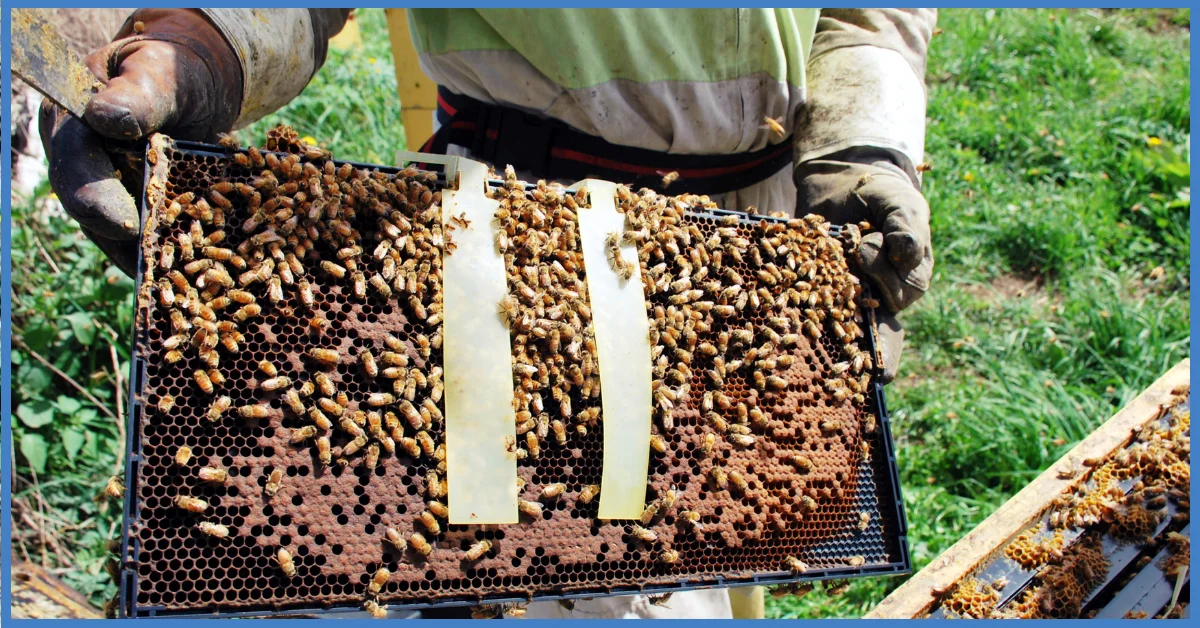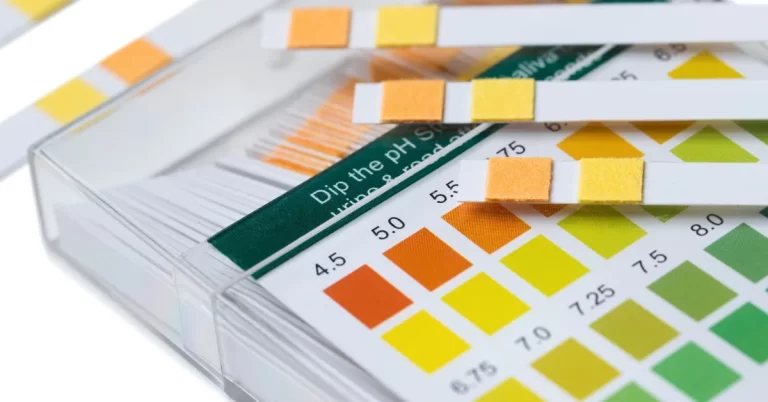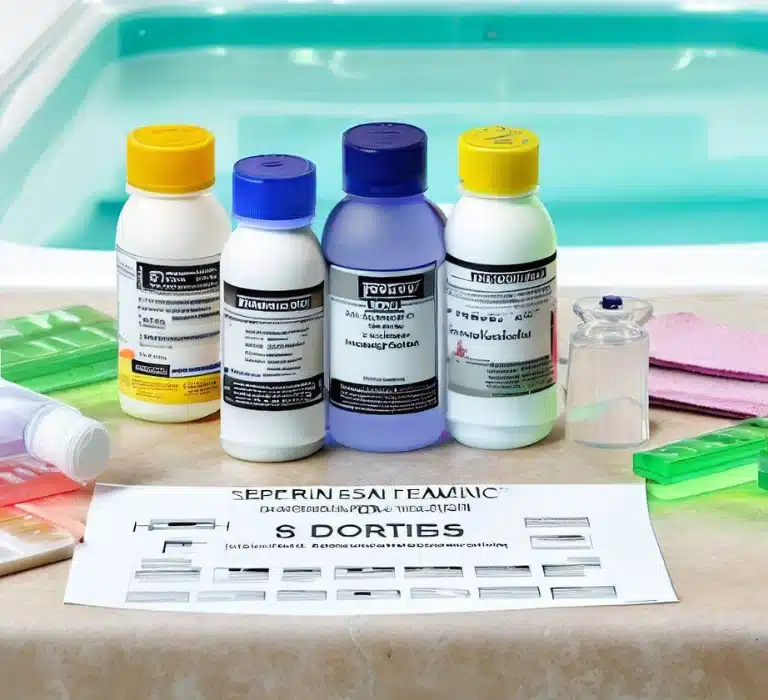Effective Strategies for Mite Treatment in Beekeeping
Find proven strategies for mite treatment in beekeeping. Learn about chemical treatments like oxalic and formic acid, natural remedies using essential oils and powdered sugar, essential beekeeper tips, and effective hive hygiene practices.
Mite infestations are one of the biggest threats facing honey bee colonies today. Varroa mites attach to bees and feed on their blood, spreading viruses and weakening the hive.
Keeping mite populations under control through integrated pest management is crucial for maintaining healthy and productive bee colonies.
What Are Varroa Mites?
Mite Biology – Overview of Varroa Mite Life Cycle and How They Infest Bee Hives
Varroa mites, scientifically known as Varroa destructor and Varroa jacobsoni, are external parasites that pose a significant threat to honey bee colonies worldwide.
These flattened, oval-shaped mites typically measure about 1.1 mm in length and are reddish-brown, making them visible to the naked eye. Understanding their biology is crucial for effective management and control.

Life Cycle of Varroa Mites
- Egg Stage: A female Varroa mite enters the cell of a developing bee larva, typically preferring drone larvae due to their larger size and longer development time. Here, she lays up to six eggs.
- Nymph Stage: After a few days, the eggs hatch into nymphs, which feed on the larva’s bodily fluids. This feeding can lead to the death or deformation of the developing bee.
- Adult Stage: Once the bee larva matures into a pupa, the mites continue to feed. By the time the pupa emerges as an adult bee, the adult female mite will have already made her way onto a worker bee, allowing her to continue the cycle by infesting other brood cells.
The presence of these mites can lead to weakened colonies and increased susceptibility to diseases, as they also serve as vectors for various viruses.
Affected bees may exhibit symptoms of Parasitic Mite Syndrome (PMS), characterized by reduced brood production, impaired foraging behavior, and, in severe cases, colony collapse.
What Causes Varroa Mites in Bee Colonies?
The spread of Varroa mites is a multifaceted issue, driven primarily by their mobility and environmental factors.
Mechanisms of Spread
- Bee-to-Bee Transmission: Varroa mites can easily transfer between adult bees, especially during colony activities such as foraging and grooming. An infested bee can hop from one flower to another, carrying the mites along.
- Equipment and Management Practices: Mites often spread during routine hive management. Equipment used in infested colonies, such as tools or protective gear, can inadvertently transfer mites to healthy hives. Additionally, moving hives or introducing new bees can further the spread.
- Natural Swarming: When colonies swarm, the newly formed groups may carry mites from the parent hive, increasing the likelihood of infestation in new locations.
Environmental Factors Contributing to Infestation
- Colony Stress: Environmental stressors, such as poor nutrition or unfavorable weather conditions, can weaken bee colonies, making them more vulnerable to mite infestations.
- Hive Density: In regions with high hive density, the chances of mite transmission increase, as proximity facilitates easier contact between bees from different colonies.
Understanding these dynamics is crucial for beekeepers. By implementing proactive measures and monitoring mite levels, beekeepers can protect their colonies and ensure their long-term health.
When and How to Treat Bees for Mites Throughout the Year
Managing Varroa mites is essential for the health of your bee colonies. Treatments should be strategically timed throughout the year to maintain effective control and ensure the well-being of your bees. Here’s a seasonal breakdown of how to treat bees for mites.
Treating Bees in Spring
Spring is a crucial time for mite management, as the bee population is expanding after winter. Here are some effective treatments to implement during this season:
- Monitor Mite Levels: Start by assessing your colonies for mite levels using methods like the sugar shake or alcohol wash. This will help you determine if treatment is necessary.
- Apivar Treatment: Spring is an excellent time to apply Apivar, as it helps control mite populations before the busy honey production season. Use two strips per brood chamber to ensure thorough coverage.
- Brood Break Strategy: Consider removing the queen temporarily to create a brood break. This can help reduce mite populations by forcing the mites to leave capped brood cells and be more exposed to treatments.
- Small Cell Comb: If possible, switch to a small cell comb to help limit mite reproduction. This method can take some time to establish, but it supports long-term mite control.
Treating Bees in Summer
In summer, beekeepers face the challenge of managing Varroa mites while honey supers are present. Here’s how to do it effectively:
- Monitor Regularly: Keep checking for mite levels, especially as the nectar flow begins. This is crucial to ensure that mite populations do not get out of hand.
- Powdered Sugar Treatment: This non-chemical method can increase grooming behavior among bees, helping to dislodge mites. Apply powdered sugar to bees, then check for fallen mites on the bottom board.
- Drone Brood Removal: Consider adding a drone comb to your hives and removing it before drone emergence. This can trap and reduce the mite population effectively.
- Chemical Treatments: If mite levels are still high, use soft chemicals such as formic acid or thymol. Ensure that honey supers are removed before application, as some treatments can affect honey production.
Treating Bees in the Fall
Fall treatment is crucial for preparing your hives for winter. Here are strategies to reduce mite populations before the cold months set in:
- Apivar or Other Chemical Treatments: Fall is another ideal time for Apivar. This treatment should be done after honey supers are removed to ensure it doesn’t contaminate your honey.
- Monitor and Assess: Regularly check your mite levels to determine if treatment is needed. Use sticky boards or drone brood inspections for an accurate assessment.
- Brood Break: If you didn’t implement a brood break in spring, now is another chance. Removing the queen for three weeks can help manage mite populations effectively.
- Pro-Winter Patties: Consider adding supplemental feeding with pro-Winter patties to ensure your bees have the necessary nutrients to survive the winter.
Treating Bees in Winter
Winter mite management is often overlooked but is crucial for the health of your bee colonies. Here are the best practices for the cold months:
- Oxalic Acid Treatment: This method can be very effective during winter months. It is typically applied when there is little to no brood in the hive, allowing for maximum exposure to the mites.
- Monitor for Mite Levels: Even in winter, check for signs of mite presence. If you see any indication of high levels, it may be worth considering an oxalic acid treatment.
- Hive Insulation: Ensure that your hives are well-insulated to keep bees warm and reduce stress. A healthy, less stressed colony is better able to cope with mite infestations.
- Minimal Disruption: Avoid opening the hives frequently during winter months, as this can disturb the cluster and lead to temperature drops. Monitor and treat as needed without unnecessary disruption.
How Do You Get Rid of Varroa Mites?
Regular monitoring and a strategic treatment plan are key to keeping mite populations under control and ensuring the longevity of your bee colonies.
There are 3 approaches to tackling these pests, including cultural, mechanical, and chemical methods. Each strategy plays a role in reducing mite populations and ensuring the overall well-being of your bees.
1. Cultural Approaches
Cultural methods focus on manipulating hive management practices to help control mite populations naturally. Here are some effective cultural approaches:
Resistant Bee Stock
- Breeding for Resistance: Select and breed bee stocks that are naturally resistant to Varroa mites. These bees exhibit behaviors like grooming and hygienic practices that help control mite populations without heavy reliance on chemicals.
Small Cell Comb
- Disrupting Mite Reproduction: Using smaller-sized combs can help limit mite reproduction. Mites prefer to breed in larger cells, so introducing small cell comb can disrupt their life cycle and reduce overall mite populations.
Brood Break
- Interrupting Mite Cycles: Creating a brood break by removing the queen temporarily can help stop mite reproduction. This technique forces mites to leave capped brood cells and be more exposed to treatments, significantly reducing their numbers.
2. Mechanical Approaches
Mechanical methods involve physical techniques to reduce mite populations in hives. Here are some key mechanical approaches:
Mite Trapping
- Using Drone Comb: Placing a drone comb in the hive allows mites to preferentially attach to the drone brood. You can then remove this comb before drones emerge, effectively trapping and reducing the mite population.
Screened Bottom Boards
- Natural Reduction: Installing screened bottom boards in your hives allows fallen mites to drop out of the hive, preventing them from reattaching to bees. This method can help reduce mite populations naturally over time.
Powdered Sugar Dusting
- Dislodging Mites: Dusting bees with powdered sugar encourages grooming behavior. As bees groom themselves and each other, many mites are dislodged and fall to the bottom of the hive, reducing their population.
3. Chemical Approaches
Chemical treatments can be effective for managing Varroa mites, but they must be used cautiously to avoid harming bees or contaminating honey. Here’s a look at some chemical options:
Soft Chemicals
- Oxalic Acid: This treatment is popular during the winter months when there is little to no brood in the hive. It can be applied as a vapor or liquid to target mites effectively without harming the bees.
- Formic Acid (MiteAway Quick Strips): This treatment can be applied even when honey supers are on, making it versatile. However, it requires careful application to ensure it doesn’t stress the bees or harm the brood.
Hard Chemicals
- Apivar: This treatment contains amitraz and is ideal for serious infestations. It should be applied according to label instructions, ensuring that honey supers are removed before treatment to avoid contamination.
Monitoring Varroa Mite Populations
By regularly assessing mite levels, beekeepers can implement timely interventions to manage infestations. Here’s how to monitor mite populations and develop a treatment schedule based on seasonal needs.
Detection Methods
Beekeepers use these methods to assess mite levels, each with its advantages and limitations. Here are the most common monitoring techniques:
1. Sugar Roll Method
This method involves shaking approximately 300 bees (about half a cup) into a jar with powdered sugar. After shaking, the sugar-coated mites are released onto a white surface where they can be counted.
- Pros:
- Non-lethal for bees.
- Provides a quick snapshot of infestation levels.
- Cons:
- Requires equipment and careful handling.
- Less accurate in colder weather when mites may cling more tightly to bees.
2. Alcohol Wash Method
This technique involves immersing a sample of 300 bees in alcohol, which dislodges the mites from the bees. The mites sink to the bottom and can be counted to estimate the infestation rate.
- Pros:
- Highly accurate and reliable.
- Works well even with low mite levels.
- Cons:
- Lethal for the sampled bees.
- Requires alcohol and careful measurement of bees and liquid.
3. Sticky Board Method
A sticky board, coated with an adhesive, is placed on the bottom board of the hive. As mites fall off bees naturally or through grooming behaviors, they stick to the board and can be counted.
- Pros:
- Non-invasive for bees.
- Allows for long-term monitoring (over several days).
- Cons:
- Can underestimate mite levels if not combined with other methods.
- Requires time and close observation.
4. Drone Brood Inspection
Mites prefer drone brood due to its longer development time. Beekeepers can uncap drone cells to visually inspect for mite presence.
- Pros:
- Direct observation of mites.
- Helps reduce mite numbers by removing infested drone brood.
- Cons:
- Time-consuming.
- May not reflect overall infestation levels accurately.
Varroa Mite Treatment Schedule
| Season | Treatment Focus | Actions |
|---|---|---|
| Spring | Focus on Prevention | – Begin monitoring for mites as bees emerge from winter. – If levels are above threshold (2-3 mites per 100 bees), consider applying soft chemical treatments like oxalic acid. – Incorporate cultural practices such as selecting resistant bee stocks and promoting strong colony growth. |
| Summer | Monitoring and Treatment | – Check mite levels regularly, especially before adding honey supers. – If counts are high, consider using formic acid treatments (effective with honey supers on). – Ensure colonies remain strong and healthy. |
| Fall | Pre-Winter Preparation | – Monitor mite populations closely as fall approaches. – Apply treatments like Apivar if levels exceed thresholds. – Consider creating a brood break to help reduce mite populations before winter. |
| Winter | Minimal Activity | – Utilize oxalic acid treatments during the cluster period when there is minimal brood. – Continue to monitor mite levels when weather permits. |
Treat Varroa Mites and Boost Hive Health with the Varomorus Oxalic Acid Vaporizer
As an Amazon Associate, we earn from qualifying purchases. This post may contain affiliate links, which means we may receive a small commission at no additional cost to you.
Treat varroa mites and boost hive health with this easy-to-use 12V oxalic acid vaporizer. Crafted with durable aluminum, it heats quickly and efficiently and vaporizes oxalic acid to kill mites without harming bees. It features a replaceable heating element and a convenient 12V power source.
Features:
- Durable aircraft-grade aluminium construction
- Replaceable heating element
- Quickly heats up and efficiently vaporizes oxalic acid
- Kills varroa mites without harming bees
- 12V power source works with cars, tractors, etc.
- User-friendly design great for beginners and experts
- Boosts honey production and hive health
- Corrosion-resistant and excellent thermal conductivity
- Hassle-free replacement policy
Pros
– Effective for vaporizing oxalic acid to treat varroa mites.
– Durable, well-built with long-lasting materials.
– Easy to use with any 12V battery (car, motorcycle, etc.).
– Heats up quickly for proper treatment.
– Comparable to pricier models, offering good value.
Cons
– Slower vaporization time compared to similar products.
– Thick reservoir design makes it hard to insert into hives with a reducer, requiring modification.
Check Other Related Products
As an Amazon Associate, we earn from qualifying purchases. This post may contain affiliate links, which means we may receive a small commission at no additional cost to you.
2. Natural Remedies
Some beekeepers prefer using natural options for controlling mites. Essential oils like peppermint, tea tree, and lemongrass can be used as miticides when diluted. The oils are applied on strips near brood areas where bees come into contact with the vapours.
Powdered sugar dusting causes mites to fall off bees and detach from the comb. It can be applied by shaking powdered sugar through the frames. Beekeepers can also selectively breed bees for hygienic behavior, exhibiting vigilance in detecting and removing mites from the hive.
What Is Apivar?
Apivar is a widely used acaricide specifically formulated to control Varroa mites in honey bee colonies. It contains the active ingredient amitraz, which effectively targets these harmful pests while posing minimal risks to bee health when used correctly.
Understanding Apivar’s benefits, application timing, and where to purchase it is essential for beekeepers looking to maintain healthy hives.
Why Use Apivar?
Apivar is highly regarded in the beekeeping community for several reasons:
- Effectiveness: Apivar has been proven to significantly reduce Varroa mite populations, which are one of the most significant threats to honey bee health. Studies show that it can reduce mite levels by up to 95% when applied correctly.
- Mode of Action: Amitraz, the active ingredient in Apivar, works by disrupting the normal function of mites, leading to their death. It acts on the central nervous system of the mites, effectively paralyzing and eventually killing them.
- Flexible Application: Apivar can be applied with honey supers still in the hive, allowing beekeepers to manage mite levels without sacrificing honey production during peak harvest times.
- Low Residue: When used according to the manufacturer’s guidelines, Apivar leaves minimal chemical residue in the hive, making it a safer option for both bees and honey.
When to Use Apivar
Timing is crucial when using Apivar to ensure optimal results and to prevent the development of resistance:
- Fall Treatment: Applying Apivar in the fall is often recommended, as it allows for the reduction of Varroa populations before winter. This ensures that the bees enter the cold months with a lower mite load, enhancing their chances of survival.
- Spring Treatment: Spring treatments can also be effective, particularly if high mite levels are detected after winter. It’s essential to monitor mite populations regularly and treat them accordingly.
- Avoiding Resistance: To avoid developing resistance, it is advisable not to use Apivar in consecutive treatments. Instead, incorporate other management strategies and treatments in rotation, ensuring a diverse approach to mite control.
Where to Purchase Apivar
Apivar is available through various sources, making it accessible for beekeepers:
- Local Beekeeping Supply Stores: Many local beekeeping supply retailers stock Apivar. Visiting these stores can provide the added benefit of professional advice on its use.
- Online Retailers: Numerous online platforms offer Apivar for purchase. Websites like Amazon, eBay, or dedicated beekeeping supply sites often have competitive prices and customer reviews to help guide your purchase.
- Cooperative Extensions: Some agricultural extensions and cooperative programs may offer Apivar or provide recommendations on where to buy it, often with insights tailored to local conditions.
Natural Mite Treatment in Beekeeping
Natural treatments can be an effective way to manage Varroa mites while preserving the health of bee colonies. By incorporating these methods, beekeepers can work towards a more sustainable approach to mite management.
How to Treat Bees for Mites Naturally
Managing Varroa mites naturally emphasizes methods that minimize chemical use while maintaining bee health. Here are some effective strategies:
- Cultural Practices: Maintain strong, healthy colonies through good hive management and proper nutrition.
- Regular Monitoring: Consistently check mite levels to catch infestations early and respond promptly.
Essential Oils (Thymol)
Essential oils are a natural alternative for mite treatment. Thymol, derived from thyme, is particularly effective. Here’s how to use it:
- Api Life Var: This treatment combines thymol with other essential oils to disrupt mite reproduction and enhance bee health.
- Application Methods:
- Place thymol-based products in the hive during peak mite seasons.
- Monitor the bees for any signs of stress and adjust application frequency as necessary.
Organic Acids
Organic acids can be effective in controlling mite populations while being less harmful to bees. Here are two popular options:
- Oxalic Acid:
- Timing: Best used during winter when there is minimal brood, allowing for direct targeting of mites.
- Application: Can be applied via drenching or vaporization.
- Formic Acid:
- Effectiveness: Works well even when brood is present, making it versatile for summer treatments.
- Products: Available in strips or as a vaporizer, it penetrates brood cells to kill mites effectively.
Best Varroa Mite Treatments: Comparing the Options
Choosing the right treatment for Varroa mites involves understanding the unique advantages and limitations of each option. By weighing the pros and cons, beekeepers can make informed decisions tailored to their specific needs and hive conditions.
Chemical vs. Natural Treatments
Both chemical and natural treatments have their place in managing Varroa mites. Here’s a balanced comparison of their pros and cons:
| Aspect | Chemical Treatments | Natural Treatments |
|---|---|---|
| Effectiveness | Highly effective against large mite populations | May be less effective, but still useful |
| Application | Often straightforward; specific instructions | May require more knowledge and effort |
| Impact on Bees | Can be harsh if not applied correctly | Generally gentler, but can still stress bees |
| Resistance | Risk of developing mite resistance | Lower risk of resistance; more diverse options |
| Cost | Usually more expensive for products | Often less costly; some methods may be DIY |
| Environmental Impact | Potential chemical residues | Generally considered more eco-friendly |
Varroa Strips vs. Oxalic Acid
When deciding between varroa strips and oxalic acid, both options have unique advantages. Here’s a comparison based on user preferences:
| Criteria | Varroa Strips | Oxalic Acid |
|---|---|---|
| Ease of Use | Simple to apply; just place in the hive | Requires specific application methods |
| Timing | Effective throughout the active season | Best used in winter or during brood breaks |
| Mite Penetration | Targets adult mites and some brood | Effective in killing mites in brood cells |
| Effectiveness | High effectiveness, especially for large infestations | Very effective with minimal brood present |
| Cost | Varies based on product; generally moderate to high | Typically lower-cost options available |
| Bee Safety | Must be applied carefully to avoid harming bees | Generally safe when applied correctly |
| Duration of Action | Provides extended protection | Shorter duration; may require multiple treatments |
When Is It Too Late to Treat for Varroa Mites?
Recognizing the signs of a late-stage infestation and implementing emergency measures is vital for beekeepers. While it can be challenging to recover from an advanced Varroa mite infestation, prompt actions can help improve the odds of saving the hive.
Signs of Late-Stage Infestation
Recognizing the signs of a late-stage Varroa mite infestation is crucial for beekeepers. Here are key indicators:
- High Mite Counts: Regular monitoring shows significantly elevated mite levels, often above 5 mites per 100 bees.
- Declining Bee Population: Noticeable reductions in adult bees, indicating stress and potential die-off.
- Poor Brood Patterns: Irregular brood patterns, including empty cells or signs of drone brood, can signal that mites are affecting bee reproduction.
- Weakness in the Hive: Overall hive weakness, with bees appearing lethargic or disoriented, can indicate high mite pressure.
- Deformed Wing Virus: The presence of bees with crumpled or deformed wings, a symptom often associated with Varroa infestations.
- Honey Production Drop: A significant decrease in honey production signals stress within the hive.
Emergency Measures
When faced with an advanced infestation, quick actions may help save the hive:
- Immediate Treatment: Apply effective treatments, such as formic acid or oxalic acid, to quickly reduce mite populations. Ensure these methods are safe for the remaining bees.
- Remove Infested Brood: If possible, remove frames with high levels of infested brood to lessen the mite load in the hive.
- Combine Weak Colonies: If some hives are too weak, consider combining them with stronger colonies to boost the population and chances of survival.
- Check for Queen Viability: Ensure the queen is healthy and laying eggs. If she’s compromised, consider introducing a new queen.
- Regular Monitoring: Increase monitoring efforts to assess the effectiveness of treatments and the overall health of the hive.
- Seek Professional Help: If the situation is dire, consult experienced beekeepers or local beekeeping associations for guidance and support.
Equipment for Mite Detection and Treatment
Specialized equipment enables beekeepers to monitor and manage mite populations. A mite wash kit uses soapy water to dislodge mites from bees, allowing quantification of infestation levels. For more information about ventilated bee suits,
Oxalic acid vaporizers allow treatment to be applied directly within the hive for full coverage. Screened bottom boards prevent mites from crawling back into hives after falling off bees.
Check Related Products
As an Amazon Associate, we earn from qualifying purchases. This post may contain affiliate links, which means we may receive a small commission at no additional cost to you.
Tips for Beekeepers
The best defense is early prevention. The key is to monitor mite levels and catch infestations before they escalate routinely. Staggering brood cycles help control mite reproduction. Always follow instructions carefully when applying treatments.
Integrated pest management combines multiple strategies like natural solutions and chemical treatments to optimize mite control while minimizing hive impacts.
Maintaining Hive Hygiene
Keeping bee hives clean limits places for mites to hide. Frequently replacing old brood comb disrupts mite reproduction cycles. Removing drone brood through trap frames selectively eliminates mites. Ensuring proper ventilation creates unfavorable conditions for mites. Strong hygienic practices reinforce other treatment efforts.
Visit Hot Tubs Patio for more information about Beekeeping.
What factors influence mite treatment choices? Infestation type and level, season, temperature, honey supers, treatment availability, cost, and beekeeper preference.
What is the new fungus treatment for mites? Metarhizium is a soil fungus that infects and kills varroa mites while being safe for bees.
When to start mite treatment in temperate climates? Late summer or early fall, before winter bees are raised.
Does feeding affect mite treatment effectiveness? Yes, feeding can hinder some treatments; it’s best to feed before or after, not during.
What’s the best treatment for mites? Integrated Pest Management (IPM) is key, using a mix of synthetic miticides, organic acids, and essential oils.
When should I start mite treatment? Monitor throughout the year; many treat in fall or early spring.
What are the newest treatments for varroa mites? Amitraz-based treatments like Apivar and thymol-based products like Apiguard.
Can you feed bees during mite treatment? Generally yes, but check treatment instructions, as some can taint honey.
What’s the best treatment for heavy infestations? A combination of treatments may be needed; consult a beekeeping expert.
What’s the best natural treatment for varroa mites? Essential oils and powdered sugar are useful, but often insufficient for heavy infestations.
When should I use Apivar? Typically in fall or early spring, avoiding honey flow periods.
Is it too late to treat for varroa mites? Not necessarily; treatment can occur year-round, but a regular schedule is best.
What do varroa mites dislike? Cold temperatures and strong, healthy colonies help resist mites.
Remember
a healthy hive with a good beekeeping routine is the best defense against mites. Be sure to monitor your mite levels and choose a treatment plan that works for your location and beekeeping goals.





















One Comment